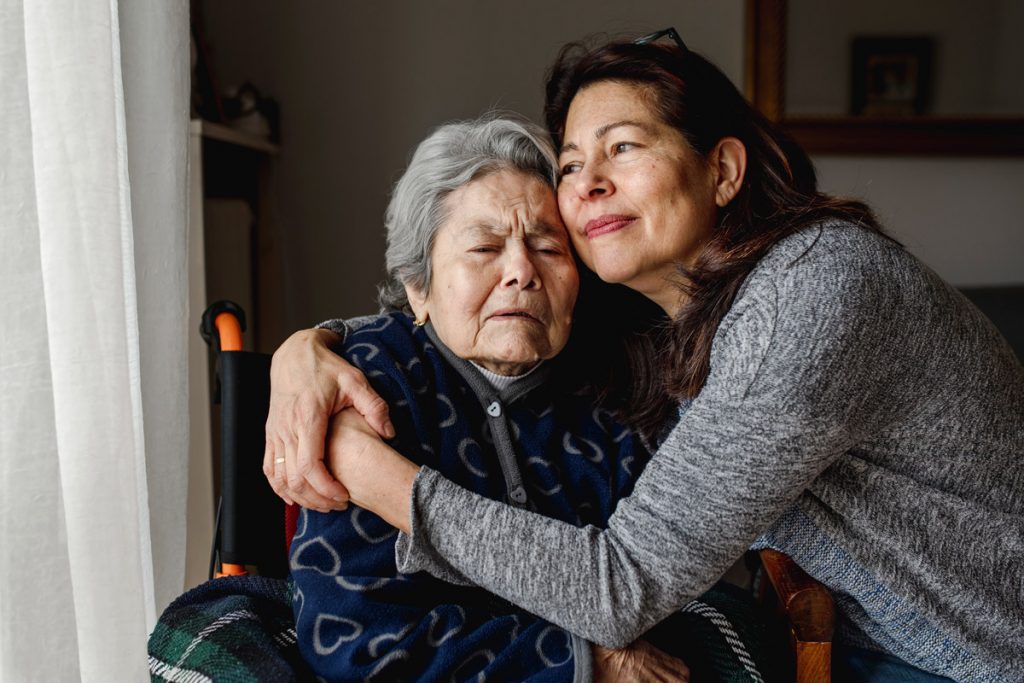[ad_1]
Children, spouses, siblings and friends of elderly people can get paid by Medicaid to help take care of their loved ones. Medicaid would rather pay a friend or family member to help someone while they are still living in their own home, instead of paying for them to be in a long term care facility.
Genworth, a Virginia-based provider of long-term care insurance, conducts an annual survey on the cost of care for seniors. The median price for one month in a private room in a nursing home in 2021 was $8,910. A semi-private room cost $7,800 a month.
To keep clients living at home longer — even once they need some assistance — all 50 states and the District of Columbia offer some kind of program through Medicaid that lets clients choose a family caregiver who is paid with Medicaid funds. Many programs are “participant-driven,” which means participants can choose who will take care of them and Medicaid will pay for some or all of the cost.
“The vast majority of older adults want to stay in their homes as they age, and allowing them to pay a friend or family member to help with their daily needs can make that possible,” said Susan Reinhard, senior vice president of AARP’s Public Policy Institute. “The pandemic provided a push for states to expand this option, and we hope many of them will make their policy changes permanent.
“Paying family caregivers is a solution that saves states money and meets the growing need for long-term care,” she added.
How to Become a Paid Caregiver for a Family Member
Clients must show they need a certain level of care, and caregivers must show they are capable of providing that care. If the client needs medical care the loved one isn’t trained for, they cannot be designated as the caregiver.
The amount of money family caregivers are paid varies among states’ Medicaid programs, the level of care the individual needs and the average wage for a home health aide in each state. The programs that allow family caregivers to be paid also go by different names and have different caveats and benefits in each state:
- Home and Community Based Services Waivers are offered by the majority of states. But many have a limited number of these waivers, so there may be a waiting list. This waiver allows the Medicaid participant to hire a friend or relative as a personal care assistant. This is also referred to as the 1915 C waiver. For instance, Iowa has the HCBS Elderly Waiver, Indiana has the Aged and Disabled Medicaid Waiver, and the District of Columbia has the Elderly and Persons with Physical Disabilities Medicaid Waiver.
- The Self-Directed Personal Assistance Services State Plan Option, also called the 1915 authority, allows a Medicaid participant to hire, train and pay the personal care assistant they choose. Based on the budget Medicaid offers, the participant decides what the assistant is paid. One unique part of this option is the participant may be required to pay employment taxes on the assistant. An intermediary helps with this financial aspect of the process.
- Community First Choice, also called the 1915 state plan option, actually applies to Medicaid recipients who are in nursing homes but need personal care services. Instead of paying extra for a staff member at the facility to provide that care, this option allows friends or family to help with bathing, grooming, light housekeeping and transportation. According to the American Council on Aging, the following nine states offer this option: Alaska, California, Connecticut, Maryland, Montana, New York, Oregon, Texas, and Washington.
- With the Caretaker Child Exception, Medicaid doesn’t pay the adult child a wage to care for their parent but allows the parent’s house to be transferred to the adult child as a form of payment. This comes into play when an elderly Medicaid participant is moving into a nursing home but wouldn’t qualify for Medicaid because they own their home. For the adult child to qualify to receive the house and the parent to qualify for Medicaid, the child must have lived with the parent for at least two years immediately before the parent went into the nursing home. If the transfer is not done legally, Medicaid’s “look back rule” could then rule the parent is ineligible for Medicaid.
Learn More About Medicaid
Medicaid eligibility in general, not just for these programs and waivers, is not consistent across the country. A general rule of thumb as of 2021 is senior applicants can’t have more than $2,583 in income and $2,000 in assets.
The limits vary by state. For example, in New York assets can be as high as $16,000. State-specific eligibility can be found here. If a senior is already enrolled in Medicaid, the next step is contacting their state’s Medicaid office.
The American Council on Aging strongly recommends finding a Medicaid planner to help with applying for caregiver roles and other benefits.
Katherine Snow Smith is a former staff writer at The Penny Hoarder. She writes about ways to make money, save money and other topics. Her work has appeared in the Tampa Bay Times, Charlotte Business Journal and Greenville (S.C.) News.
[ad_2]

